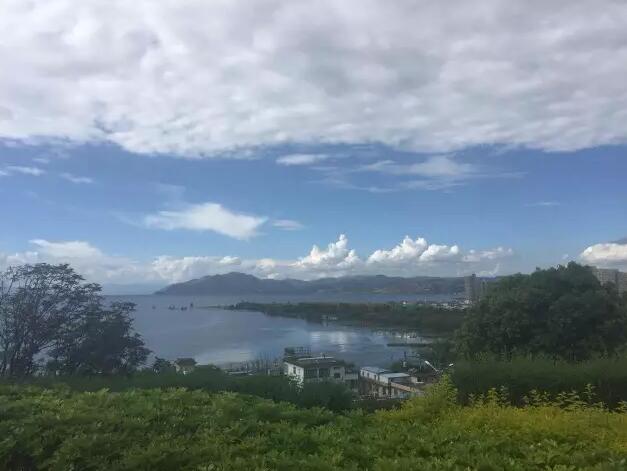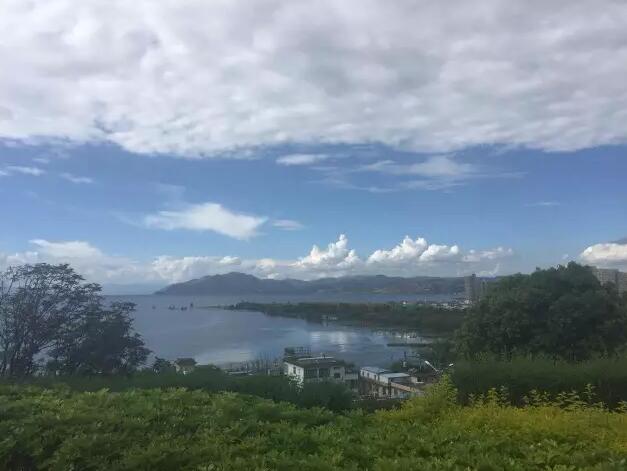Erhai Lake vs. garlic: A war between environment and wealth?
China.org.cn,September 28, 2017 Adjust font size:
In August, the sky was as crystal clear as usual over Erhai Lake of Yunnan Province in southwest China. Yet, the scenic spot once teeming with tourists was far less crowded than before.

When an agricultural product that has made local people rich is found to cause damage to the environment, is there any way to have the best of both worlds?
The highland lake has long suffered from pollution, with several major green algae outbreaks.
The local government has realized the problem and is determined to fix it. According to the Ministry of Finance in Beijing, seven large projects with a total investment of around 13 billion yuan (US$ 1.98 billion) have been launched to treat pollutants.
Despite the heavy investment, however, the local government failed to face the crux of the problem, which lies in the abuse of chemical pesticides and fertilizers in rural areas.
Among the seven projects, there was no effective solution to the dominant rural pollution. Local farmers are used to the traditional farming methods relying heavily on agrochemicals. Without any check on the use of fertilizers and pesticides, it made people wonder if the expensive projects can achieve any real effect.
However, anything involving farmers usually sees local officials shying away from taking harsh actions, because besides treating pollution, poverty reduction is also their major task.
According to statistics, Yunnan Province is home to the largest number of the poorest counties in the country, and most of the 73 counties involved are located around Erhai Lake.
The farmers around the lake have been making money by growing garlic. To raise the yield, they tend to use as many fertilizers as they can, which inevitably causes great damage to the environment.
It seemed the local government was trapped between a rock and a hard place, having to make a difficult choice between the lake and the garlic, which represent the two extremes of environment and wealth.
Yet, is there really no third option?
A report written by Dr. Kevin Mo, the managing director of the Paulson Institute Representative Office in Beijing, provided us inspiration.
Regarding this issue, Japan has set a positive example, Dr. Mo wrote in the report. The city of Toyooka is a major rice production center. Local farmers used to raise rice yield at the expense of the environment, causing the extinction of local white storks.
They then spent 30 years to repair the ecological system. When the environment turned better, they found to their surprise that their income didn’t drop, because although the rice yield was lower, the rice quality improved and could be sold at a higher price.
To help farmers around Erhai Lake to learn from this example and choose the third option, Beijing Goldenway Bio-tech rented 51 mu (1 mu=0.067 hectares) of farm land to carry out experiments. The company had won the fourth annual Paulson Prize for Sustainable Cities in 2017 for its active probe into the organic waste recycling and farmland quality improvement.
Two programs were adopted to make a comparison with local farmers’ current production method. In Program A, the use of chemical fertilizers and pesticides was reduced by 30 percent, and organic fertilizers and physical protection approaches were adopted. In Program B, the use of chemical fertilizers and pesticides was totally abandoned.
The experiment found that both Program A and B could achieve the target yield amount. Moreover, the amount of garlicin, a nutritious material in the garlic, was raised by 33 percent and 13 percent respectively in Program B and Program A.
In Program B, the discharge of nitrogen and phosphorus was reduced by 78 percent and 74 percent annually, while in Program A, the discharge of the two materials was reduced by 55 percent and53 percent annually.
The experiment has given hope to Chinese authorities and farmers who want to make money while doing no harm to the ecological system. Maybe there can be a third option besides wealth and environment alone, and green can turn to gold, too.

